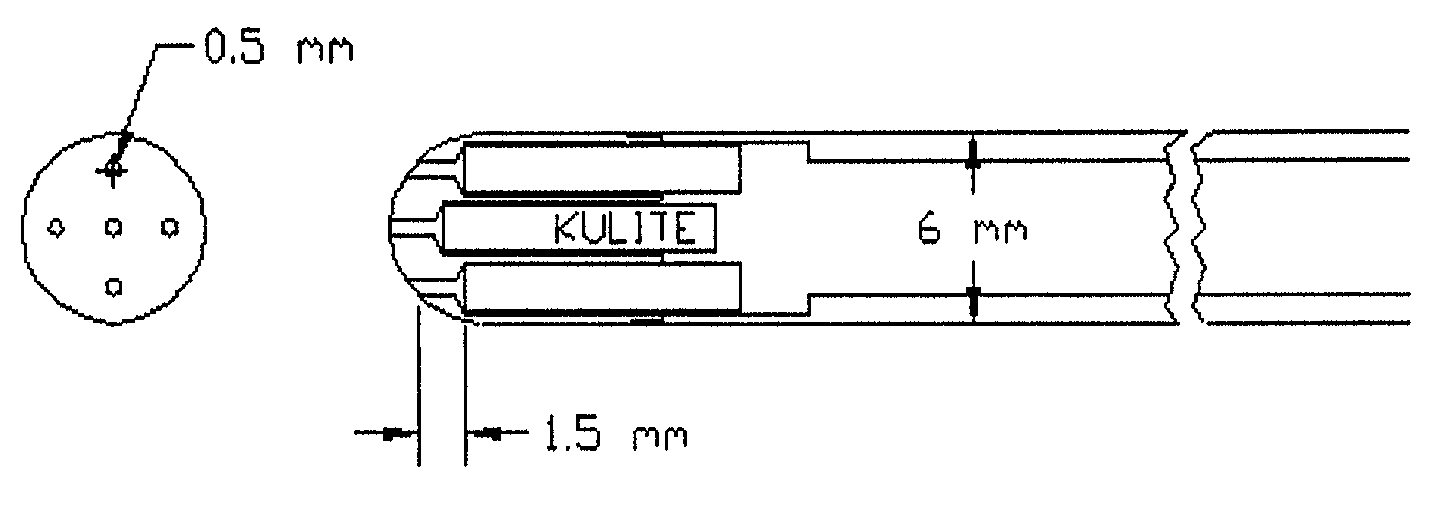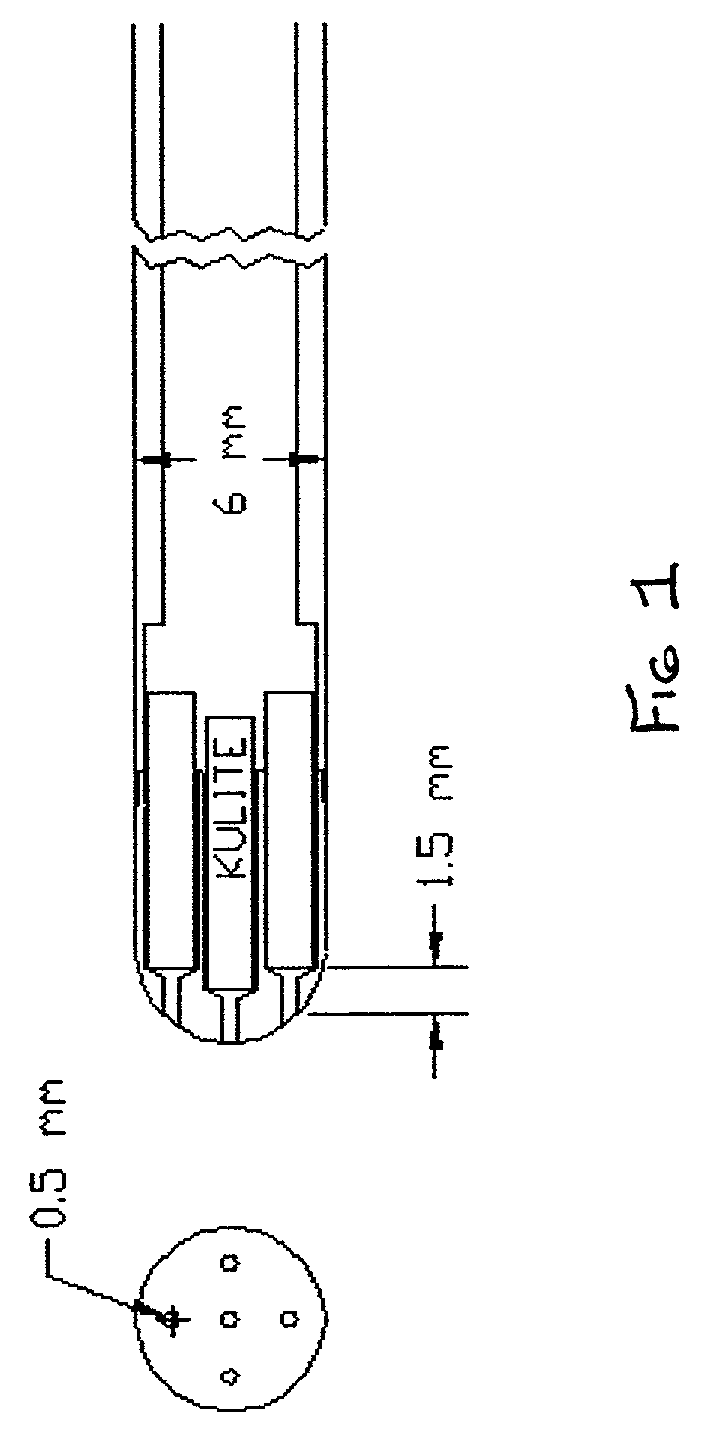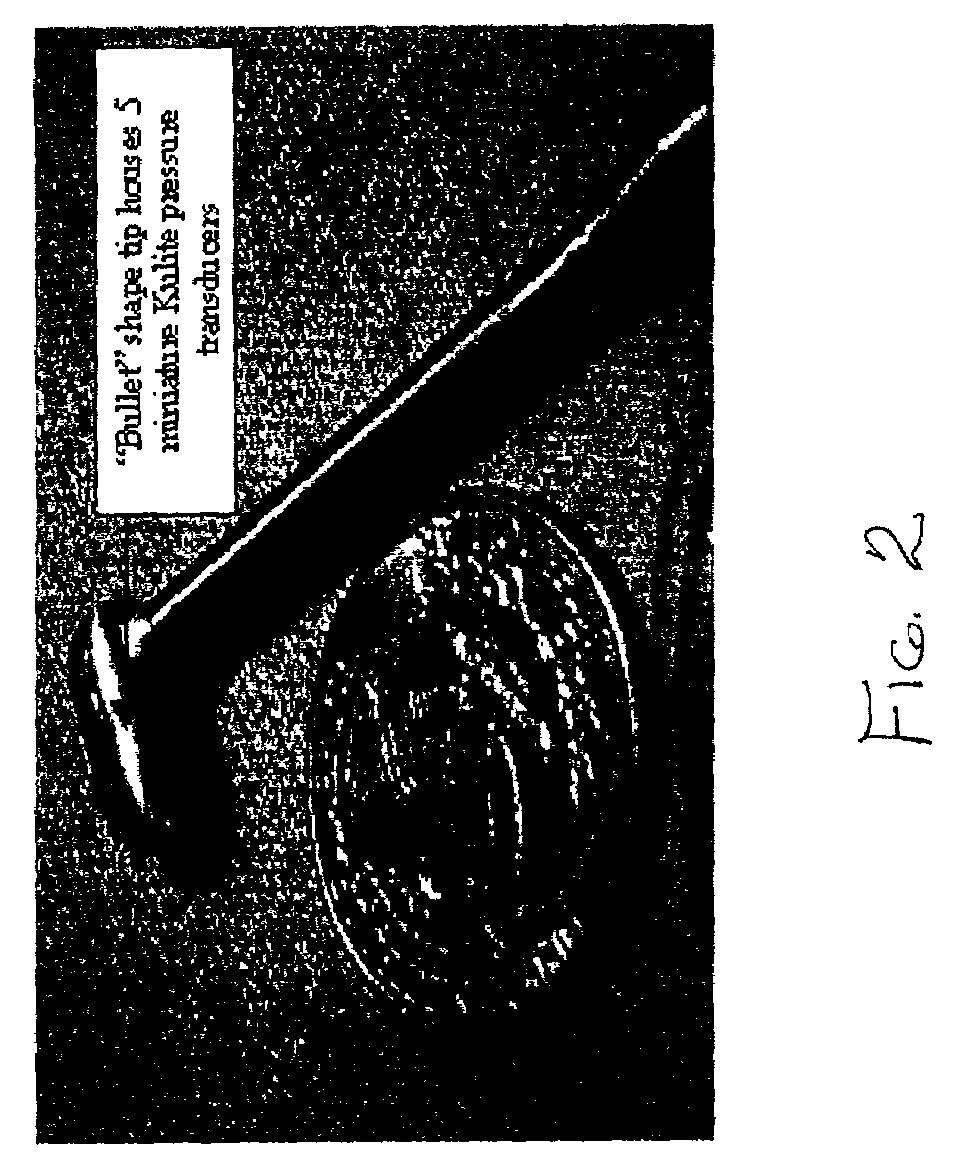Embedded-sensor multi-hole probes
a multi-hole, embedded technology, applied in the direction of instruments, volume metering, liquid/fluent solid measurement, etc., can solve the problems of lack of flexibility, impracticality of techniques, and current state-of-the-art of such probes
- Summary
- Abstract
- Description
- Claims
- Application Information
AI Technical Summary
Benefits of technology
Problems solved by technology
Method used
Image
Examples
Embodiment Construction
[0060]Having generally described the invention, its objects and its operation, attention is directed to the drawings and the accompany description of the detailed operation of the invention and its embodiments. There are several embodiments of the invention depending on the geometry of the probe, the number of pressure ports / holes at the probe tip, the type and size of the pressure transducers and their proximity to the probe tip.
[0061]Referring to FIG. 1 there is shown a typical example of the embodiment for a large 5 or 7-hole probe with miniature pressure transducers embedded at the probe tip. The embodiment, noted as 1, uses a commercially available miniature Kulite XCS-062 pressure sensors. The Kulite XCS-062 is a differential pressure transducer using a fully active Wheatstone bridge on a silicone membrane. The sensors have a high frequency response (50 kHz) and can come in a variety of pressure ranges (the transducers shown in FIG. 1 have a pressure range of plus or minus 5 p...
PUM
 Login to View More
Login to View More Abstract
Description
Claims
Application Information
 Login to View More
Login to View More - R&D
- Intellectual Property
- Life Sciences
- Materials
- Tech Scout
- Unparalleled Data Quality
- Higher Quality Content
- 60% Fewer Hallucinations
Browse by: Latest US Patents, China's latest patents, Technical Efficacy Thesaurus, Application Domain, Technology Topic, Popular Technical Reports.
© 2025 PatSnap. All rights reserved.Legal|Privacy policy|Modern Slavery Act Transparency Statement|Sitemap|About US| Contact US: help@patsnap.com



